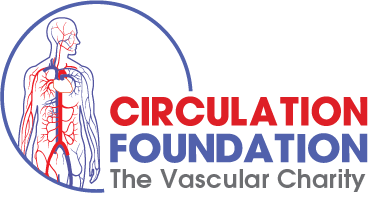Injection treatments (“Sclerotherapy”) offer a very minimalist outpatient based treatment for some conditions
- Cosmetic skin vein problems: thread veins, flare veins, telangiectasia & venules
- Minor Varicose Veins
- Excessive sweating “Hyperhidrosis”
Excessive sweating
Excessive sweating can affect any part of the body, most commonly the armpits (“axillae”), and secondarily the hands or face. The condition is known medically as “Hyperhidrosis”.
This condition is of course very socially embarrassing, and can be very career limiting as affected people often feel very compromised in social situations, public work presentations or meetings. This can lead to under-confidence, avoidance of such situations, and in turn can lead to lack of career progression.
There are a number of causes; some simple factors or remedies can be identified for some people, and of course stronger antiperspirants prescribed by your GP can help. However if symptoms persist despite these measures, then specialist consultation and other treatment options are appropriate, and will benefit a number of patients. For some the solution will be targeted injection sclerotherapy to the affected areas with Botulinum Toxin (e.g.Botox™ ) , with good results, though this does need repeat treatment sessions at various intervals (usually 3- 8 months).
Microsclerotherapy
Cosmetic skin vein problems such as thread veins, flare veins, telangiectasia & larger cutaneous veins (venules) can be treated successfully with micro-injection treatments (microsclerotherapy), which use irritant chemical injections to cause the tiny & small veins to clot (“thrombose”) and then disappear (by fibrosis / occlusion).
This process carries very little risk, the veins being so small, but there are some associated problems with the treatment which can be quite troublesome or problematic. These include developing open sores (tiny ulcers) at the site of the injection(s), and these can take several weeks to heal, but will normally heal successfully with no adverse consequence in the long-term. Another problem is of skin discolouration (“staining” i.e. darker discolouration, or “hypopigmentation” i.e whiteness) . These problems occur in a significant number of patients, though dark discolouration usually fades with time (weeks -months). Whiteness however tends to be permanent, and dark staining can be. Another problem that can occur is visible thrombosis or “stasis” of blood in the treated venules. This means that the blood in the visible vein no longer disappears with pressure, but is permanently visible and dark. This is very difficult to treat if it occurs, and can leave permanent dark visible veins.
Varicose Vein Sclerotherapy (Foam sclerotherapy)
Truly varicose veins are larger veins lying under the skin, rather than within the skin. They are usually over 4mm in diameter, and when standing are visibly and palpably distended and stand out (“protuberant”). These veins commonly ache, throb, or give pain when standing for long periods.
The venous system is composed of a “deep system” of veins which run deep in the centre of the limb beneath the muscles, and a “superficial system” which lie just beneath the skin, and have multiple small branches, but a few named draining main “trunk” or “truncal” veins (the Long & Short Saphenous veins).
If the valves in the truncal veins fail, then the trunk veins are usually treated with a surgical procedure (endovenous ablation – see webpage on Varicose veins). However, if the main truncal veins function normally, but there are visibly swollen, tortuous branch veins these can be treated either by injections (sclerotherapy) or by simple minor surgical removal (termed “phlebectomies” or “avulsions”).
Just as for small skin veins, larger varicose veins can be treated successfully with sclerotherapy treatments using irritant chemical injections (as a Foam) to cause the veins to clot (“thrombose”) and then slowly disappear. This process causes an inflammation of the veins (termed “thrombophlebitis”), during which the veins become hard, lumpy, tender and often red (erythematous). This commonly lasts 7-14 days, and can usually be effectively treated with NSAIDS (Non-Steroidal Anti-Inflammatories), both as tablet medication and topically applied creams or ointments. Sometimes the firm lumpy veins can be felt for some weeks afterwards, and occasionally discolouration of the skin may occur along the line of the vein if it is very close to the skin. This discolouration usually fades over time, but can occasionally be permanent.
Sclerotherapy is very effective for smaller branch veins, though larger veins are more prone to recurring (or the technique failing), and may require repeat treatments. Compression over the treated areas is usually applied for 3days.







